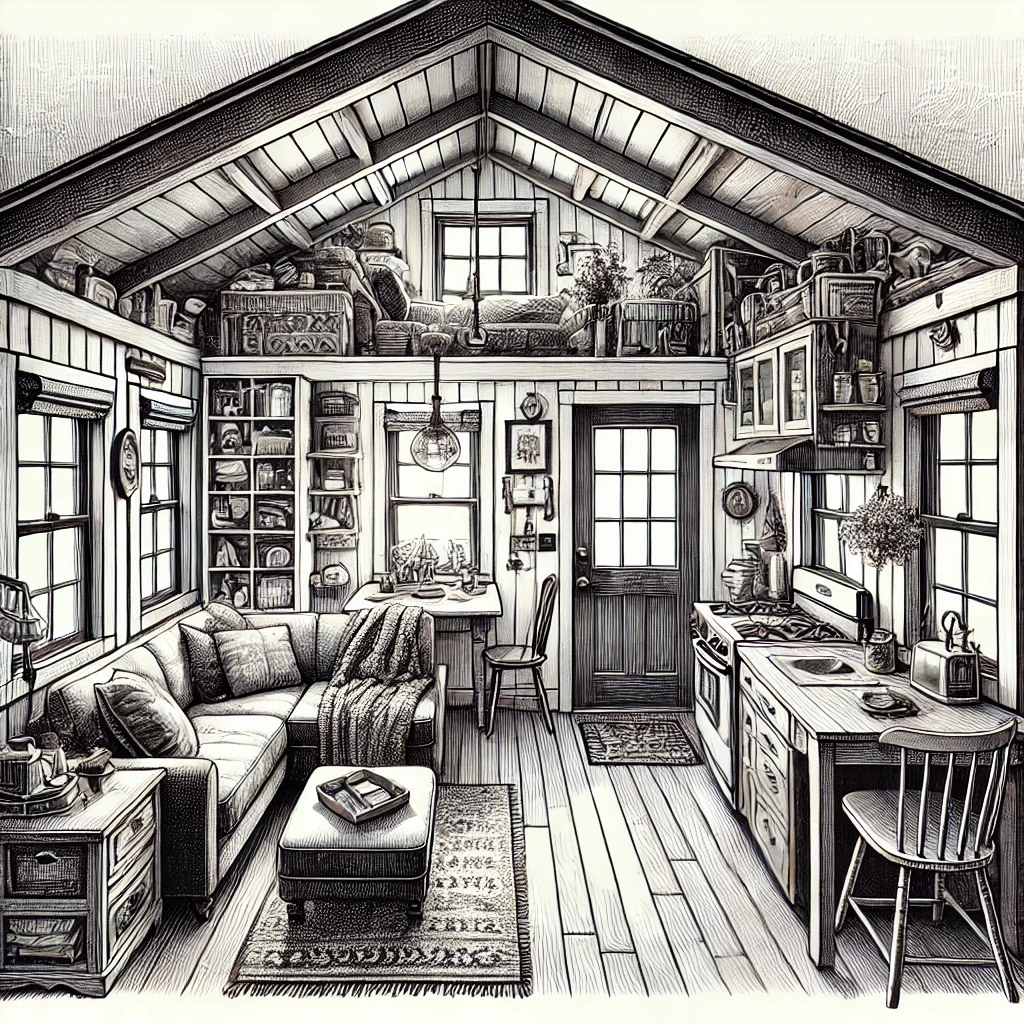Accessory Dwelling Units (ADUs) and Detached Accessory Dwelling Units (DADUs) offer homeowners flexible living space solutions, enhance property value, and provide rental income opportunities.
While both serve similar purposes, they have some key differences in structure, regulations, and applications that are crucial for homeowners and developers to understand.
In this guide, we’ll break down the differences so you can see which one is better for your situation.
Let’s get into it.
What is an ADU?
An Accessory Dwelling Unit (ADU) is a secondary housing unit located on the same property as a primary residence.
ADUs can be either attached to the main house or integrated within its structure, such as basement apartments or garage conversions.
- Structure and Design: ADUs can be built as internal units (e.g., basement apartments), attached units (e.g., side or rear additions), or converted spaces (e.g., garages).
- Utility Connections: ADUs often share utility connections with the main house, including water, electricity, and sewage systems.
Learn more about ADUs in our article here.
What is a DADU?
A Detached Accessory Dwelling Unit (DADU) is a type of ADU that is completely separate from the primary residence.
These units are standalone structures, often resembling small cottages or tiny homes, and are situated in the backyard or elsewhere on the property.
- Structure and Design: DADUs are independent structures, providing complete living facilities such as kitchens, bathrooms, and sleeping areas.
- Utility Connections: DADUs typically require separate utility connections, which can increase construction complexity and cost.
You can learn more about DADUs in our article here.
3 Key Differences Between ADUs and DADUs
Now we know exactly what an ADU and DADU actually is, let’s see the major differences between them.
1. Structure and Independence
The first key difference is structure and the independence they offer.
- ADUs: Can be attached or within the primary residence, offering less privacy but an easy way to integrate with any existing living space – obviously you can achieve privacy if you want, but the flexibility is there if not.
- DADUs: These are obviously detached and separate (hence the name), which gives them a higher degree of privacy.
DADUs are more suited for rentals or for friends or family who need some privacy. ADUs can also provide this, but if they’re attached to the main house, it can be more challenging to achieve.
2. Construction and Cost
Another key difference is cost.
- ADUs: Generally less expensive to construct than DADUs due to shared infrastructure and the possibility of utilizing existing space. According to the National Association of Home Builders, the average cost of constructing an ADU ranges from $20,000 to $150,000.
- DADUs: Typically more costly due to the need for independent utility connections and the construction of a new, standalone structure. Costs can range from $100,000 to $150,000+
ADUs and DADUs can both be expensive, but ADUs have more capability to do things on a budget, whereas DADUs tend to be more expensive on average.
3. Zoning and Regulations
In terms of zoning and other regulations, ADUs do tend to be easier to gain permission for rather than detached versions.
- ADUs: Subject to local zoning laws that may be more flexible due to their integration with the primary residence. These laws dictate size, location, and use.
- DADUs: Often face stricter zoning regulations due to their detached nature. Some areas may have specific requirements for lot size, setbacks, and height restrictions.
This does vary from state to state as there are no federal laws regarding ADUs and DADUs, so always check your local guidelines.
Practical Considerations
The last thing to touch on is the practical considerations in terms of planning, design, finance, and the impact that both types of structures can have on home value.
Planning and Design
Proper planning and design are crucial for both ADUs and DADUs, both when it comes to utilities and also using the space available to its maximum potential.
Engaging with architects and builders familiar with local regulations can optimize space and ensure compliance. You can also use Presite to quickly generate floorplan layouts.
Financing and Budgeting
Finance stuff can be super boring, but it’s not something to forget about when building an ADU or DADU.
Both can be very expensive to construct, so you may need to take out a loan or explore another financial option.
Check out our guides on ADU financing or building an ADU on a budget for useful tips in both of these cases.
Some local governments provide grants and incentives for ADU builds as well, so it’s alway worth checking with your local authority and keeping up to date with new laws.
Impact on Property Value
Both ADUs and DADUs can significantly enhance property value, up to 35% in some cases, but possibly more if you are using one for rental income.
The choice between them depends on the specific needs of the homeowner, the available space, and the desired use.
